![]()
![]()
![]()
Cash
&
Check
|
Call toll free 877-4ABOLISH |
||||
|
General Pest Control - Insects and Spiders. Abolish has many technicians allocated in the general pest control field. Most have well over ten years of experience executing the job effectively and efficiently. All of our technicians are customer friendly and courteous. All of our technicians are trained, licensed, and with many years of experience. There is no service contract required so whether it be one time or a monthly routine, we guarantee you the same quality work as the next. |
Gallery
|
|||
Our services we provide.Our general pest control is NOT limited to what is shown here. We also treat flying insects, spiders, and other crawling insects. The only exception is termites. First you must narrow down your pest problem to a single category. Once you have a general idea choose one of the following services below for more info, facts, and services. Ant
Distinguishing characteristics: Control Method : Cockroach
Found in dark, moist areas such as around bathtubs, clothes hampers, sewers and basement corners. Also, wherever food is prepared and stored. Distinguishing characteristics: Control Method :Maintaining a clean environment, elminate food sources, and Cockroach
Found in all parts of the United States. They’re most common in high moisture situations, especially around decaying organic matter. Most common in late spring or early summer. Distinguishing characteristics: Control Method : Cockroach
The most common roach in United States homes. Breeds throughout the year. Favors humid atmosphere and an average temperature of 70 degrees. Distinguishing characteristics: Control Method : Flea
Most common during the summer, especially when homes are reoccupied after vacation. Most common hosts are cats, dogs, man and a wide variety of animals. Distinguishing characteristics: Control Method : Pillbug
They prefer moist locations and can be found under vegetable debris or any object on damp ground. Frequently invade damp basements, crawl spaces and may infest potted plants Distinguishing characteristics: Control Method : Tick
Found most often in the ear, between the toes and on the back of dogs. After feeding they retire to baseboards, molding, around window-cord pullets, any protected openings. Distinguishing characteristics: Control Method : Silver Fish
Among the most common insect in the home. They eat paper, fabrics and get into cereals. Firebrats prefer temperatures over 90 degrees and are usually not found together with silverfish. Distinguishing characteristics: Control Method : Beetle
Most common in northern states. This beetle infests carpets and feeds on the fabric. It also feeds on animal products that are left undisturbed such as wool, leather, furs, etc. Distinguishing characteristics: Control Method : Centipede
Found throughout the country. House centipedes live in damp areas such as cellars, closets, bathrooms. Outdoors they can be found in damp locations, under leaves and stones, etc. Distinguishing characteristics: Control Method : Earwig
Earwigs are active at night and hide in cracks or underneath objects during the day. Most species scavenge on dead animal and plant material. Eggs are laid in underground burrows. Distinguishing characteristics: Control Method : Flying InsectsHoney Bee
The European Honey bees are active during the day, foragers spend most of the day collecting pollen. Most species rely on nectar from flowers for food.. Eggs are laid in wax-based honeycombs. Distinguishing characteristics: Control Method : Wasp
More aggressive than honeybees. Distinguishing characteristics: Control Method : Yellow Jacket
Most species scavenge on dead animal and plant material. Eggs are laid in underground burrows. Distinguishing characteristics: Control Method : House Fly
One of the most widely distributed insects; it is a pest that carries and transmits serious diseases. Severe house fly infestations should be treated immediately for human health safety concerns. Distinguishing characteristics: Control Method :
Mosquito
Mosquitoes, their eggs, and larvae, can be found in and around stagnent water. The best way to prevent mosquitoes from breeding and populating around your home would be to, of course, remove any stagnant water. Southern California sees less mosquitoes during dry weather seasons compared to wet humid areas in the US, but they are still present and can spread such diseases as encephalitis virus or the west nile virus. Distinguishing characteristics:
|
||||
home | specials
| commercial |
residential | service area Absolutely
no rights of distribution by sale or other transfer of ownership
or by rental, lease or lending, preparation of derivative works,
or reproduction, in whole or in part, is not granted. No text, graphics
or photos may be downloaded and used on another Internet site, without
express permission of AbolishPestControl. For information on obtaining
photo usage and rights, please see our contact
page. AbolishPestControl reserves the rights to actively protect
against infringement. |
||||

 House ant
House ant American cockroach
American cockroach Oriental cockroach
Oriental cockroach German cockroach
German cockroach Cat flea
Cat flea Sowbugs & Pillbugs
Sowbugs & Pillbugs Brown dog tick
Brown dog tick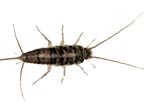 Silverfish & Firebrats
Silverfish & Firebrats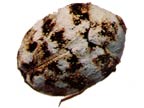 Carpet beetle
Carpet beetle 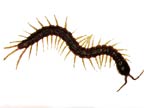 Centipede
Centipede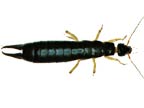 Earwigs
Earwigs Honey bee
Honey bee 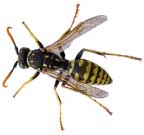 Wasps
Wasps Yellow Jacket
Yellow Jacket  House Fly
House Fly  Mosquito
Mosquito